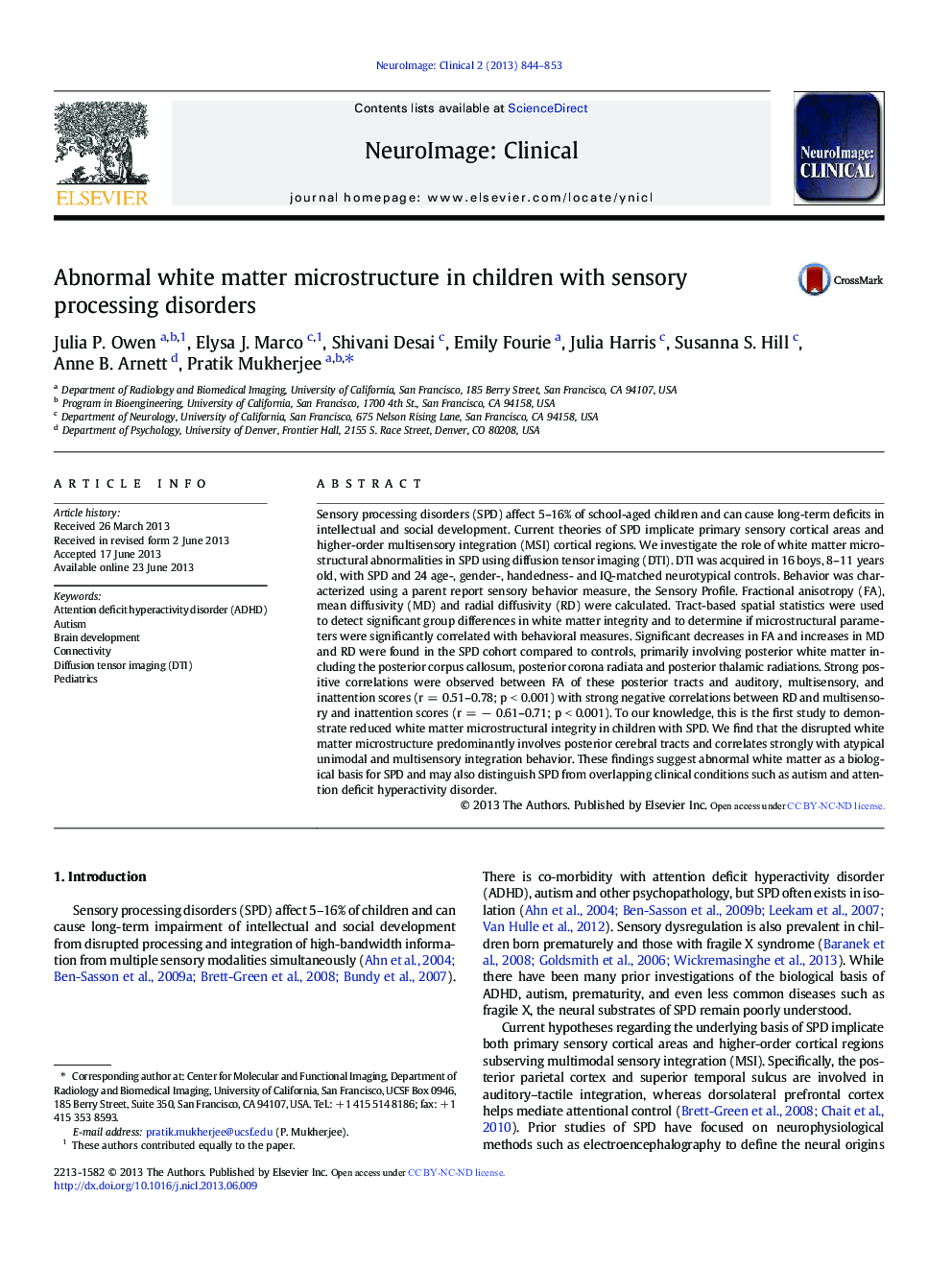| کد مقاله | کد نشریه | سال انتشار | مقاله انگلیسی | نسخه تمام متن |
|---|---|---|---|---|
| 3075569 | 1580965 | 2013 | 10 صفحه PDF | دانلود رایگان |

• Abnormal posterior white matter microstructure in sensory processing disorders (SPD)
• Posterior cerebral white matter microstructure correlates with sensory behavior.
• DTI may help distinguish SPD from autism spectrum disorder and ADHD.
• DTI may yield prognostic and predictive biomarkers of SPD for clinical use.
Sensory processing disorders (SPD) affect 5–16% of school-aged children and can cause long-term deficits in intellectual and social development. Current theories of SPD implicate primary sensory cortical areas and higher-order multisensory integration (MSI) cortical regions. We investigate the role of white matter microstructural abnormalities in SPD using diffusion tensor imaging (DTI). DTI was acquired in 16 boys, 8–11 years old, with SPD and 24 age-, gender-, handedness- and IQ-matched neurotypical controls. Behavior was characterized using a parent report sensory behavior measure, the Sensory Profile. Fractional anisotropy (FA), mean diffusivity (MD) and radial diffusivity (RD) were calculated. Tract-based spatial statistics were used to detect significant group differences in white matter integrity and to determine if microstructural parameters were significantly correlated with behavioral measures. Significant decreases in FA and increases in MD and RD were found in the SPD cohort compared to controls, primarily involving posterior white matter including the posterior corpus callosum, posterior corona radiata and posterior thalamic radiations. Strong positive correlations were observed between FA of these posterior tracts and auditory, multisensory, and inattention scores (r = 0.51–0.78; p < 0.001) with strong negative correlations between RD and multisensory and inattention scores (r = − 0.61–0.71; p < 0.001). To our knowledge, this is the first study to demonstrate reduced white matter microstructural integrity in children with SPD. We find that the disrupted white matter microstructure predominantly involves posterior cerebral tracts and correlates strongly with atypical unimodal and multisensory integration behavior. These findings suggest abnormal white matter as a biological basis for SPD and may also distinguish SPD from overlapping clinical conditions such as autism and attention deficit hyperactivity disorder.
Journal: NeuroImage: Clinical - Volume 2, 2013, Pages 844–853